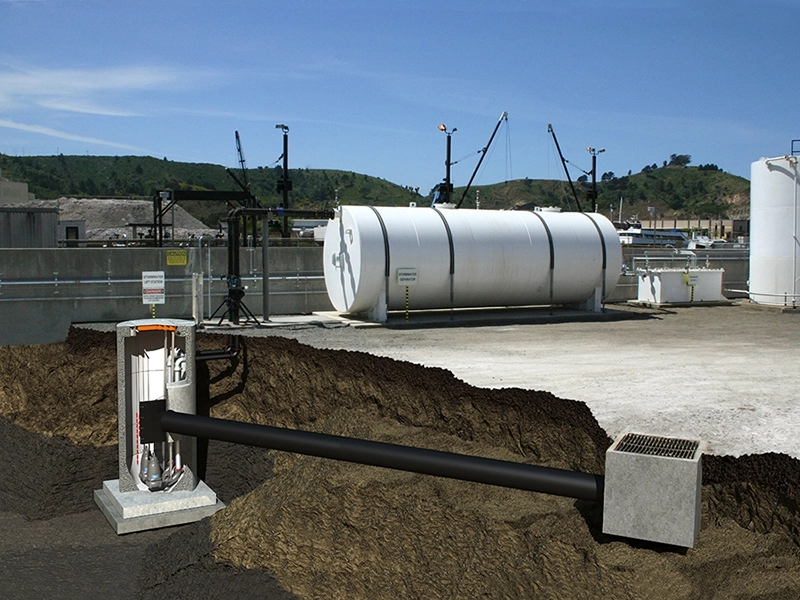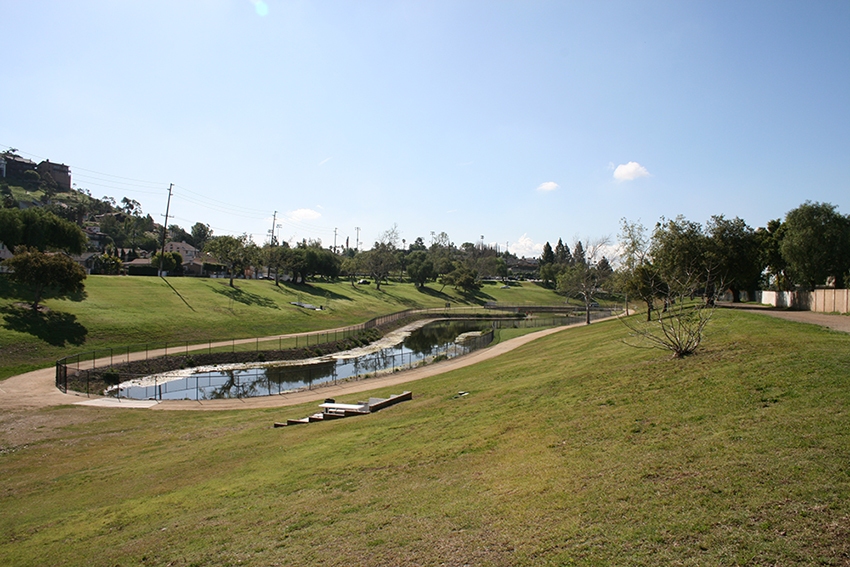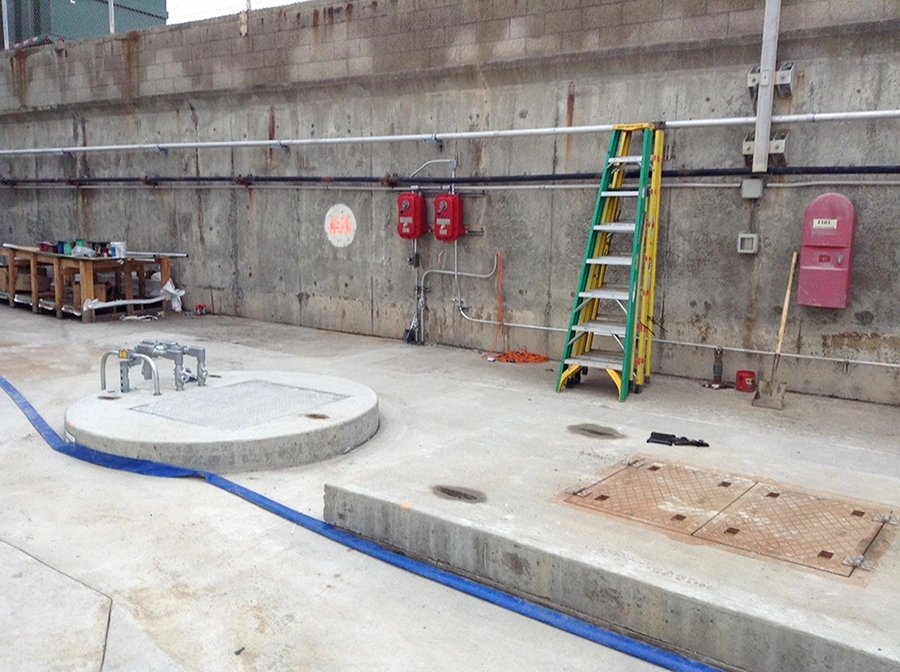
In last week’s blog, the topic of water was discussed to show how different sources produce different water. Romtec Utilities understands that the source of water can have far reaching implications on a pump or lift station design. Wastewater was the main topic of the previous blog, but now we will look at stormwater. Like wastewater, stormwater can be evaluated largely by the source of its flow, but unlike wastewater, stormwater can also be evaluated by where it is getting discharged from the pump station. First, let’s look at stormwater as it relates to its source.
The three major water sources we discussed last week were residential, commercial, and industrial, and these three sources are essentially the same for stormwater. In this case however, it is more important to understand how the stormwater is collected before entering the pump station. There are some slight differences between runoff from a large commercial parking lot and a new residential development, but from a design point of view, there are much bigger differences between stormwater runoff from a storm drain and stormwater from a detention pond.
There are a lot of technologies and methods available for collecting and screening stormwater prior to pumping. For designing a pump station, these distinctions become a better way to classify the stormwater source, except in some industrial applications.
The first source to discuss is raw stormwater runoff, where the stormwater flows straight from a drain or collection system into the pump station. In almost every location, this water will contain mixed solids, grit or sediment, and some form of chemical/ hydrocarbon or mineral contaminants. The concentration of these elements typically varies greatly with the season. The beginning of the rainy season and dry season rains will have a high ratio of pollutants to water.
Pump stations designed to handle raw stormwater runoff should be designed to handle these conditions even though they represent a small portion of the pump station operating time. These pump stations also need to be able to pump at a rate exceeding the inflow. Raw Stormwater runoff pumping may require increased redundancy to avoid downtime and flooding from problems with pumping solids and other pollutants. This can involve adding backup pumps, level sensing, controllers, and electrical generators.

The next source for stormwater is from a detention pond. There are two types of detention ponds that have major design implications for pump stations. The first type is a detention pond that acts as flood control. This type of detention pond can collect a large amount of rainwater, but it needs to be actively pumped while the rainwater is collecting to prevent an overflow. A pump station for this type of stormwater will usually have two or three large horsepower pumps capable of pumping faster than the water can collect.
The second type of detention pond is designed to contain a storm event and hold it. In this circumstance, the pump station only needs to empty the pond at a determined rate. This type of pump station can be fitted with fewer pumps that have lower horsepower. Depending on the design of the intake structure, both types of detention pond systems may need to handle the same types of solids, grit, and contaminants as with raw stormwater.

The next stormwater source can be classified by the use of one or more types of upstream treatment devices. There are many structural, mechanical, and filtering treatment devices that can be installed upstream from pump stations and treatment plants. Commonly these devices are bar screen vaults, weir walls, baffles, hydrodynamic separators, and others. Each device is designed to remove a particular pollutant like those previously discussed. These devices can be used by themselves or in cooperation to screen stormwater before it enters a pump station.
Stormwater that has been sufficiently screened can be handled like clean water in the lift station design. In these types of systems, it is sometimes possible to use turbine pumps instead of submersible pumps. Doing this can lower the pump station cost and increase its pumping efficiency. Turbine pumps should only be used with water free from solids, so evaluating the water quality prior to getting a lift station design is important when upstream screening devices are used.
In some circumstances, customers will consider the upstream screening devices to be an aspect of the pump station design. Romtec Utilities has designed, manufactured, and supplied a lot of lift stations with upstream screening. In many circumstances, this approach works well because it allows our engineers to determine and understand the precise way that the stormwater will be screened. With this knowledge, it makes the design of the actual pump station much simpler.

The final major stormwater source is from industrial applications. Stormwater from an industrial site can be extremely varied, but typically, the site owner will have a clear idea of what the water chemistry will be. Industrial sites also tend to view stormwater pump stations as a final line of defense against contamination from industrial accidents. These situations, like oil or chemical spills, are rare, but the majority of industrial companies want to have a system in place to handle these types of events. Industrial stormwater pump stations often must handle stormwater with the potential for contaminants and also the ability to pump the raw contaminants in high concentrations.
These types of requirements can lead to pump stations that are designed with redundancy and with measures to protect against oil or other chemicals. These measures might include fiberglass or stainless steel basins, double-wall sumps, stainless steel pumps, surface-mounted level sensors, and other robust components. Some sites will include oil/water separators or other like components upstream of the pump station. These components prevent the pump station from having to pump high ratios of contaminants while still providing a last line of defense against spills. Additionally, many industrial sites maintain water treatment capabilities designed for the specific products and byproducts on the site. So the pump station design may have to pump into a pressure treatment system.
This is another way that stormwater is classified: where it discharges. Wastewater almost always flows exclusively to treatment, but stormwater can discharge into a retention pond, wetland, other waterway, or to treatment. Depending on the point of discharge, stormwater must be handled in different ways. Typically, this is beyond the scope of the pump station, like with discharge structures (to reduce erosion) or treatment vessels.
Virtually every body of water in the United States has a limit for particular pollutants from stormwater. These pollutants are things like oil, salts, nutrients (like fertilizer), sediment, and minerals (like copper). Newer stormwater pump stations can include treatment in the pump station itself. In these systems, it is necessary to know the requirements for discharging into a specific location so that the pump station and treatment system can discharge water that will have no adverse effects on the environment. Romtec Utilities can develop traditional pump stations and skid-mounted systems with treatment capabilities for stormwater.

One final classification of stormwater as it applies to pump station design is nuisance flow. Stormwater pump stations are designed to handle storm events with potentially high flows, but the rest of the year there might be rain that produces very low flows of stormwater. This low flow is frequently referred to as nuisance flow. Nuisance flow can cause a variety of maintenance concerns for pump stations if it is not handled in the system design. The best way to handle nuisance flow is by adding a small pump to the system. This pump is often called a jockey pump, and it can handle nuisance flow until a storm event requires the larger pumps to take over operation.
Stormwater is big area of focus for American infrastructure, and the number of stormwater projects is increasing. Stormwater is also being regulated and enforced with greater emphasis on environmental protection. Romtec Utilities has experience developing pump stations that can meet the new requirements for stormwater while also saving time and money for engineers, owners, contractors, and developers. Telling our staff about any of the factors discussed in this blog will help get your stormwater project started right!
